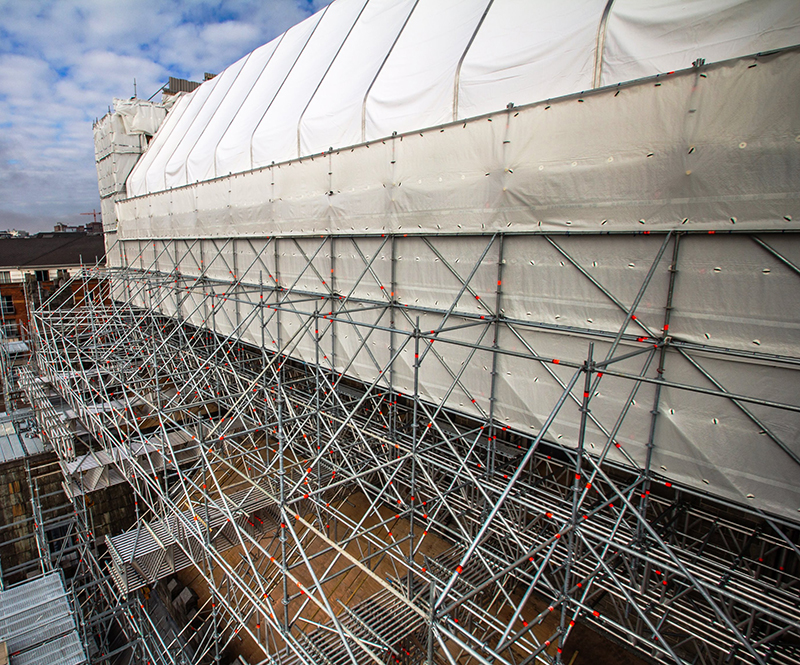St Patrick’s Cathedral’s biggest construction project in 150 years has involved a complex temporary works design.
Repairs to the roof of St Patrick’s Cathedral in Dublin have reached an important milestone with the completion of a vast scaffold and weather protection system for the 800-year-old building. The £8m conservation project began last September with the appointment of Clancy Construction as main contractor.
It follows storm damage four years ago, when high winds blew slates off the roof leaving two holes large enough “to drive a Mini car through”, in the words of the Very Reverend William Morton, dean of St Patrick’s.
It is the largest project at the cathedral since the restoration by Benjamin Lee Guinness 150 years ago. The distinctive blue grey slates used for the work will be sourced from the same slate mine in Wales as those in the 1860s.



The scaffolding design took a year to plan. As tying into the building was not possible, Clancy, scaffolding contractor Ainscaff and scaffold supplier Layher designed a bespoke support structure.
“Clusters of beams were clamped to the walls, then fixed to external support scaffolds to provide a base for further structural elements which rise to support the temporary roof,” explains Ainscaff director Simon Ainscough.
“The design effectively bridges – and, therefore, avoids loading onto – lower roof areas which run alongside the nave, while helping to ensure an important door access area remains open. At the same time, the external support scaffold, which extends down to ground level, provides the optimum structure for the installation of a material loading bay and access stair system.”
The ‘bay-by-bay’ construction of the Layher temporary roof structure meant that the limitations of only having one crane on site were sufficient for the installation. “As each bay was craned into position and sheeted, it was then rolled along and fixed to create space for the following frame,” says Ainscough.
The scaffold and temporary roof installation was completed in four months by a team of 14 scaffolders. Almost 10km of scaffolding was used and the temporary roof spans some 18m.
The restoration project will take around two years and the cathedral is expected to stay open throughout.










